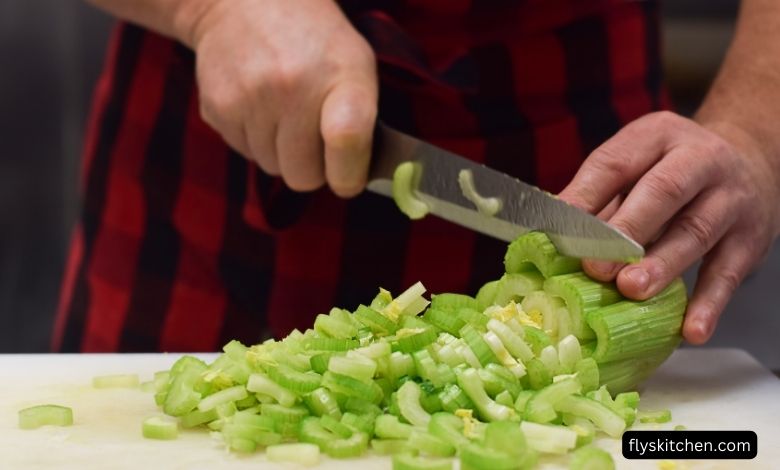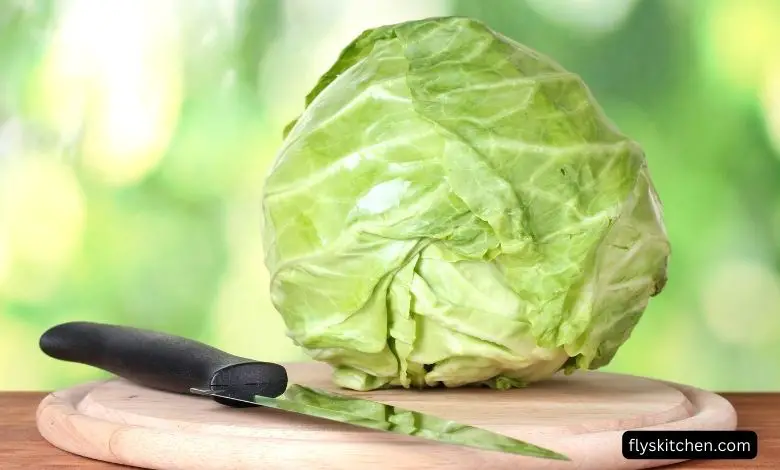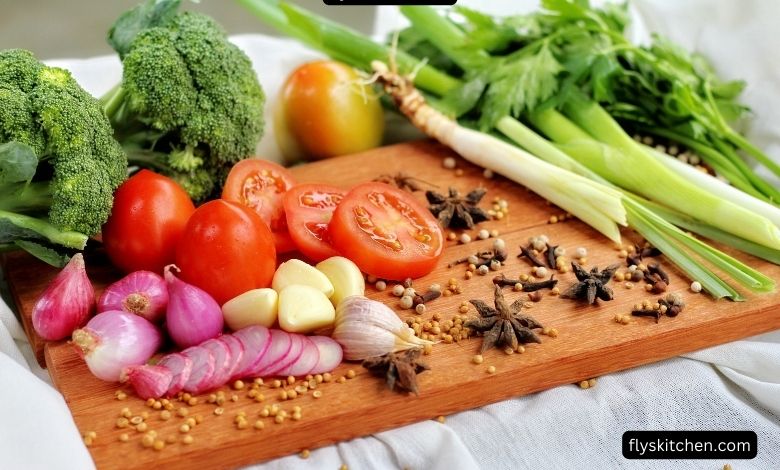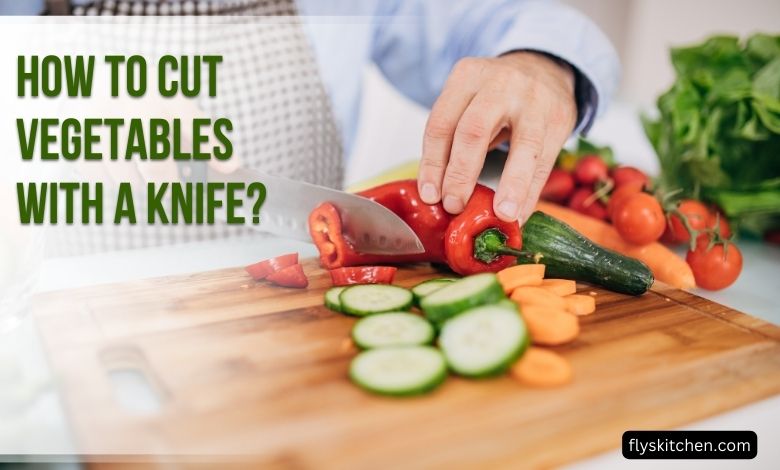Chopping vegetables is one of the most basic yet essential skills in the kitchen. Whether you’re dicing onions for a sauce, julienning carrots for a salad, or slicing cucumbers for a snack, knowing proper vegetable-cutting techniques can make you more efficient, safe, and confident in the kitchen. In this comprehensive guide, we’ll walk through everything you need to know about cutting common vegetables, from how to choose the right knife to proper slicing, dicing, and julienne cutting methods.
Contents
Choosing the Right Knife
The first step to mastering vegetable cutting is selecting the proper knife. Here are some tips:
- Chef’s knife – An 8 to 10 inch chef’s knife is the ideal all-purpose vegetable knife. The broad blade and pointed tip allow you to cleanly chop, slice, and mince vegetables. Go for high-carbon stainless steel for durability and corrosion resistance.
- Paring knife – For precision tasks like deveining shrimp or cutting vegetable garnishes, use a 3 to 4 inch paring knife. The short, nimble blade provides control.
- Serrated knife – Serrated knives efficiently cut through hard or waxy produce like tomatoes and squash without crushing it. Look for a medium length, roughly 8 inch blade.
- Quality over quantity – Consider investing in one high-quality, well-sharpened chef’s knife rather than buying a full knife block. Proper handling and maintenance is key.
- Find the right fit – Test knives for comfort and balance. It should feel like an extension of your arm with a sturdy, non-slip grip.
Proper Cutting Techniques
With your knife selected, it’s time to start chopping. Here are some key techniques for cutting common vegetables:

Onions
Onions can be fickle and slippery. Follow these tips:
- Trim off ends – Slice off the root and stem ends so onion sits flat. Remove papery outer layers.
- Halve and peel – For diced onions, cut the onion in half from root to stem. Lay each half flat-side down and remove the papery skin with your fingers.
- Cut vertically – Make vertical parallel cuts up to, but not through, the root end.
- Cut horizontally – Make horizontal cuts parallel to the cutting board to dice the onion. Finally, make a horizontal cut through the root end to separate the diced onion.

Celery
Celery’s tough fibers and curve make it tricky to cut straight. Here are some strategies:
- Start at base – Cut from the base of the celery stalk up towards the leaves. This follows the natural curve.
- Angle knife inwards – Angle the knife slightly inwards to follow the shape while cutting sticks or dice.
- Cut thin sticks – Aim for 1⁄4 inch thickness for tasty, quick-cooking sticks. Much wider and strings can be an issue.
Bell Peppers
Remove seeds and membranes for clean, even cuts:
- Slice off top – Cut off the stem end and bottom. Stand pepper upright.
- Remove core – Use a paring knife to cut around the inner core and scrape out seeds and membranes.
- Flattening – Lay pepper flat to maximize surface area for efficient chopping.
- Cut as desired – With the pepper flat, you can easily julienne, dice, or slice as needed for the recipe.

Leafy Greens
Prevent bruising and tearing when working with delicate greens:
- Stack leaves – Wash leaves and neatly stack similar sized leaves before cutting.
- Roll up – For chiffonade or thin ribbons, tightly roll stacked leaves lengthwise.
- Thin slices – Use a sharp knife to cut thin perpendicular slices across the rolled leaves.
- Rough chop – For a rough chop, keep leaves in a pile and make cuts through the stack, rotating as needed.
Herbs
Keep herbs fresh and vibrant using these techniques:
- Remove stems – Strip leaves from tougher stems to avoid bruising. Discard stems.
- Stack leaves – Gather into a pile. Larger leaves on bottom, smaller on top.
- Roll up – Roll the stacked leaves tightly lengthwise.
- Chiffonade – Thinly slice the rolled leaves for fine ribbons. Or leave in stack and roughly chop.
- Avoid bruising – Use a sharp knife and handle herbs gently. Don’t crush or mash during chopping.

Cutting Methods
Now that you know how to prep individual vegetables, let’s overview the basic cutting techniques you’ll employ across ingredients:
Dice – Cut into small cubes. First cut into slices or sticks, then make perpendicular cuts. Keep pieces uniform in size where possible.
Chop – Cut into small irregular pieces. Use a rocking motion with knife tip on board to chop herbs, greens, and other delicate veggies.
Mince – Finely dice into very small pieces. Useful for ingredients like garlic and shallots.
Julienne – Thin matchstick strips. First cut into sticks, then into lengthwise strips. Keep strips uniform.
Batonnet – Thicker cut sticks, around 1⁄4 inch x 1⁄4 inch. Cut into sticks then trim ends square.
See the chart below for a visual guide:
| Cut | Description | Example Uses |
|---|---|---|
| Dice | Small, evenly cubed pieces | Onions for salsa, carrots for soup |
| Chop | Irregular, small pieces | Lettuce for salad, parsley for garnish |
| Mince | Very fine, almost paste-like | Garlic for dressings or marinades, shallots for sauce |
| Julienne | Thin matchstick strips | Carrots for slaw or salad, zucchini for stir fry |
| Batonnet | Thick cut sticks | Celery and carrots for snacks or crudite |
Knife Skills and Safety Tips
Master these fundamentals for fast, safe vegetable prep:
- Sharp knives are safer – Keep blades sharp. Dull knives require more force and are prone to slipping.
- Curl fingers – Always curl fingers in to avoid nicking them. Grip produce with knuckles if needed.
- Use a claw grip – Hold ingredients with a claw grip for control and leverage. Keep the knife tip down.
- Watch fingertips – Pay extra attention to fingertip placement when hands are close together during tasks like mincing garlic.
- Cut on proper surfaces – Choose a dedicated cutting board that won’t dull or damage knives. Never cut directly on countertops.
- Clean as you go – Wipe up juices, scraps, and any stray debris to prevent slipping and keep your workspace tidy.
Frequently Asked Questions
What’s the best way to dice an onion?
Trim off ends, cut in half stem-to-root, peel, make vertical cuts towards root end leaving it intact, then make horizontal cuts to dice. Finally, cut through the root end. This keeps the onion intact as long as possible for easy, even dicing.
How thin should I slice vegetables for stir-fries?
For even cooking, slice veggies like bell peppers, carrots, and snap peas into thin strips about 2 inches long and 1⁄4 inch thick. Bias-cut vegetables diagonally for elongated ovals that won’t overcook.
What’s the benefit of a claw grip?
Curling your fingers and thumb in towards the palm and gripping food with your knuckles provides stability and control. This keeps hands safe and lets you apply even leverage and force when cutting.
Should my knife make contact with the cutting board when chopping?
Yes, gently tapping the sharp edge against the board in a rocking motion helps propel food upwards for even chopping. Avoid excessive pounding which can damage knives or boards over time.
How can I prevent onions from making me cry?
Chill onions for 30 minutes before cutting to reduce volatile gases that cause tears. Use a very sharp knife to minimize cell damage. Leave the root end intact as long as possible, and cut near an exhaust fan or open window.
Conclusion
With the right tools and techniques, cutting vegetables can be fast, easy, and enjoyable rather than a chore. Invest in quality knives, keep them sharp, and practice fundamental knife skills like the claw grip for control and efficiency. Pay attention to fingertip placement, curl hands properly, and use suitable cutting boards. When prepping produce, consider the best way to trim, peel, core, and slice each vegetable for your desired use. Finally, maintain cleanliness and organization as you work for maximum safety. Master these basics, and you’ll gain confidence chopping all kinds of vegetables for spectacular soups, salads, sides, and more.

